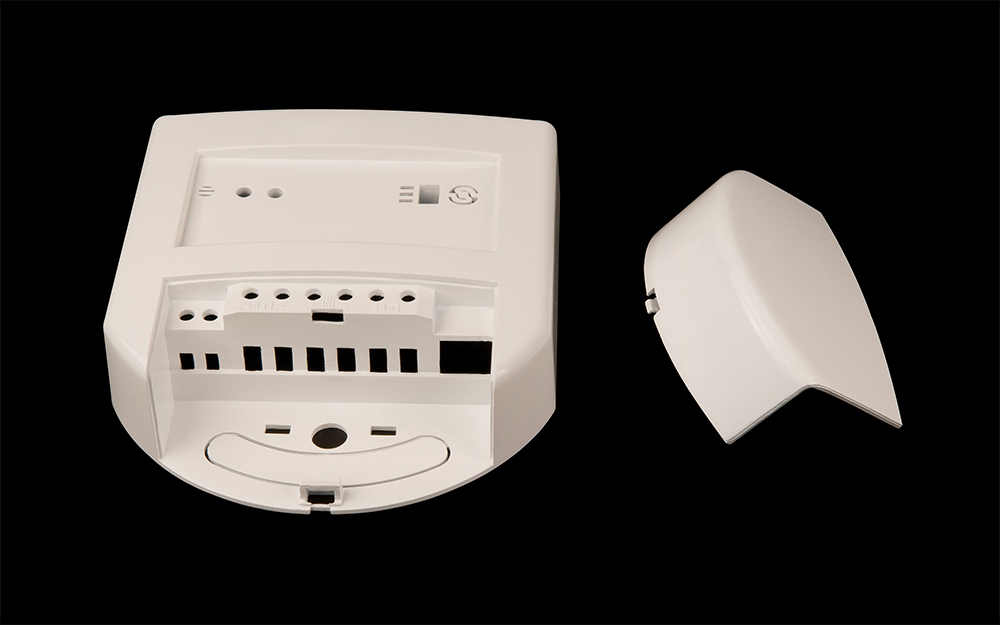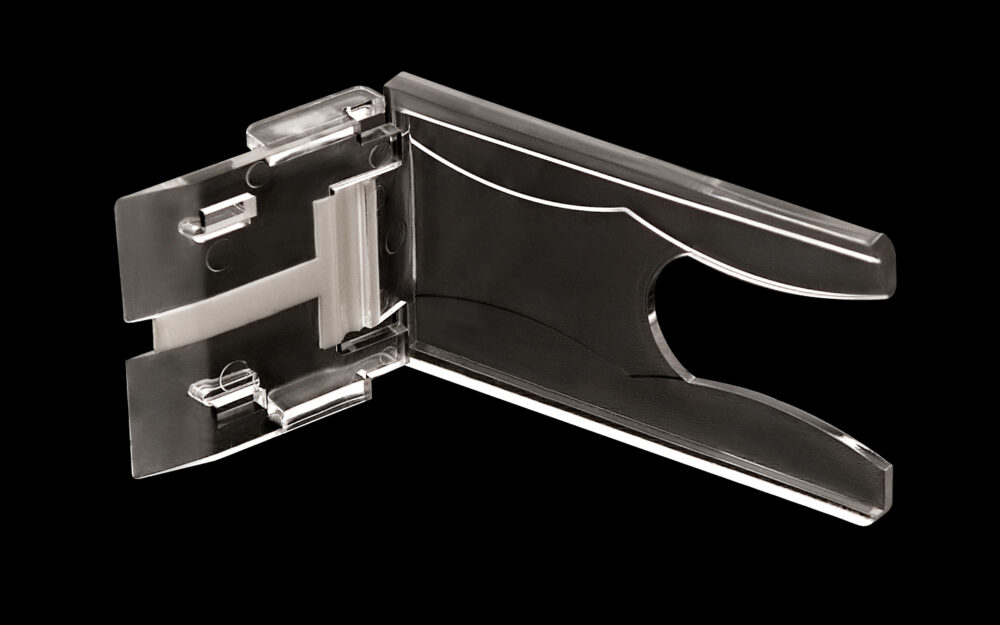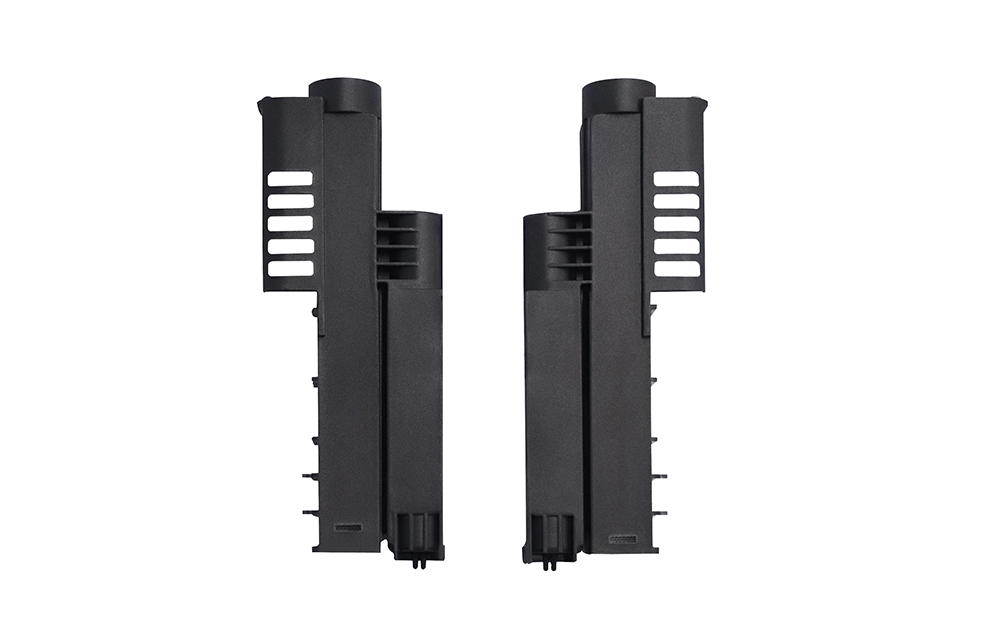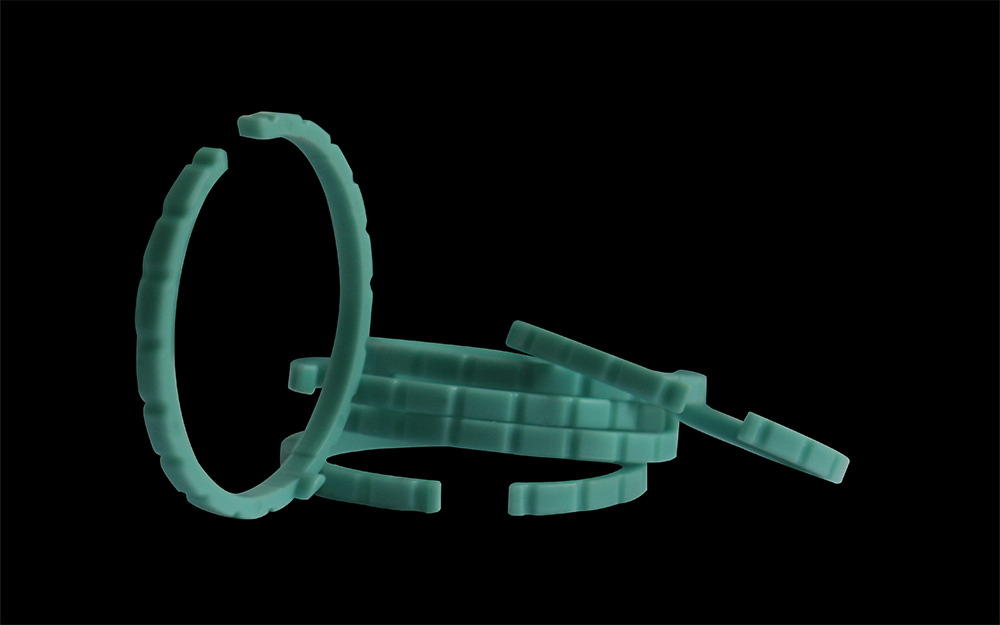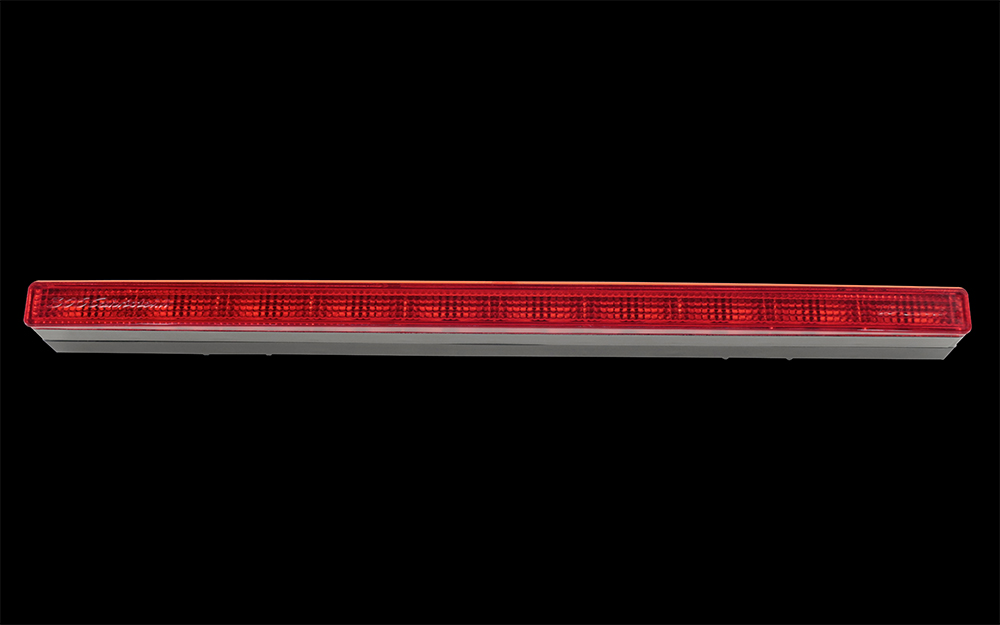Plastics for injection molding
Injection molding relies on a multitude of plastic materials to create functional parts. Protolis provides a wide range of production-grade thermoplastics for on-demand manufacturing of plastic parts, including:
- 40+ production grades ready for injection
- Specific grades on demand: Access the right material for your specific injection parts needs
- Customization: Choose from a diverse range of colors and finishes for both aesthetic and functional possibilities
Common injection molding plastics
Learn more about the many different types of materials that can be used for injection molding.
Description
Acrylonitrile Butadiene Styrene is an affordable plastic material that offers impressive impact resistance, stiffness, and strength. It also boasts good dimensional stability and low water absorption. Additionally, it is easy to paint and electroplate.
Applications
General household items: gardening tool, toys, kitchen appliances, electrical/electronic appliances
Widely use for pre-production prototype of housings, covers and structural components
Description
The plastic blend of ABS and PC exhibits a set of properties that depend on the ratio of PC to ABS. By combining the advantages and disadvantages of both materials, this blend offers a compelling proposition. The compound is both durable and impact-resistant, thanks to the combination of the two materials, making it bendable without being fragile or easily breakable.
Applications
Similar to ABS applications requiring better impact strength
Electrical/electronic product shell
Automotive interior
Description
Polycarbonate serves as an excellent substitute for glass due to its high transparency. Furthermore, it offers high resistance to impact and good temperature resistance, as well as good electrical insulation, excellent dimensional stability, and low water absorption. It is also easy to paint and electroplate.
Applications
Applications requiring transparency and high impact resistance
Exterior and interior automotive parts
Exterior lighting
Description
PMMA, also known as acrylic, is a highly transparent plastic that serves as a lightweight alternative to glass and an economical substitute for PC, albeit with lower impact strength. Additionally, it offers high resistance to scratch and is UV and weather-resistant. It also provides good dimensional stability and low water absorption, and is easy to paint and electroplate.
Applications
Construction (outdoor applications)
Automotive light parts
Electronic screens
Cosmetic packaging and display
Description
This thermoplastic material boasts high strength, stiffness, and toughness, making it an ideal candidate for various applications. Additionally, it exhibits excellent bearing, wearing, and sliding properties, along with high tensile strength and resistance to impact, temperature, and heat. It also offers chemical resistance to hydrocarbons and solvents, as well as good dimensional stability and low moisture absorption.
Applications
Commonly used in bushings, rollers, wear strips, gears, and pump parts.
Description
Polypropylene stands out as one of the lightest thermoplastics obtainable, offering outstanding resistance to fatigue as well as chemical resistance, particularly to most alkaline and acidic substances. Moreover, it demonstrates low moisture absorption and non-toxic properties.
Applications
Packaging industry
Household appliances
Electric appliances
Automotive decorative parts
Description
High-density polyethylene is a flexible and lightweight plastic material that provides impressive resistance to impacts, breaks, and abrasion, in addition to serving as an excellent electrical insulator. It also offers excellent resistance at low temperatures and good chemical resistance. Furthermore, it exhibits good dimensional stability and low moisture absorption.
Applications
Construction (pipes, tanks, water storage)
Mechanical equipment parts
Electronic appliances
Food packaging and container
Description
LDPE shares many characteristics with HDPE, but it is softer and more flexible. However, under stress, it is more prone to cracking.
Applications
Household (hinges)
Electronic appliances
Food packaging
Description
Polyvinyl chloride is a polymer that boasts average impact strength, good tensile strength, and stiffness. Additionally, it exhibits exceptional resistance to chemicals and corrosion, good dimensional stability, no water absorption, and is self-extinguishing.
Applications
Construction industry (pipes, window and door frames)
Automotive parts
Medical devices
Description
Polyamide, commonly known as nylon, is a lightweight plastic material that offers good tensile strength and stiffness, comparable to that of metal. It exhibits excellent resistance to bearing, fatigue, and abrasion, along with impressive corrosion resistance and electrical properties.
Applications
Construction material
Automotive parts
Aircraft parts
Electronic and electrotechnical parts
Description
PA66 exhibits chemical and physical properties that are similar to PA6, albeit with slightly less moisture absorption, higher mechanical properties, and superior short-term heat resistance.
Applications
Construction material
Automotive parts
Aircraft parts
Electronic and electrotechnical parts
Description
Polybutylene terephthalate is an engineering thermoplastic material that provides outstanding mechanical properties, such as high strength and toughness, as well as excellent electrical insulation. Furthermore, it demonstrates good resistance to both UV and chemicals and can be used over a broad temperature range from -40℃ to 110°C. It also exhibits high dimensional stability and low moisture absorption.
Applications
Food industry
Electrical and electronic appliances (connector strips, insulating housing)
Household appliances
Medical equipment
Description
Polyetheretherketone is a high-performance thermoplastic material that offers exceptional chemical resistance and low moisture absorption. It also exhibits good wear, abrasion, and fatigue resistance, along with excellent tensile strength. Furthermore, it provides high-temperature resistance and is naturally UL94 V-0, which means it emits low-toxicity gas if burnt. Additionally, it boasts good dimensional stability.
Applications
Used in many of the most critical areas in general industries, including automotive, marine, medical, and aerospace.
Description
Polyphenylene sulfide is an advanced engineering plastic that shares properties similar to metal, including exceptional mechanical strength, excellent wear resistance, and fatigue endurance. It also provides good electrical insulation and high-temperature resistance, while being naturally UL94 V-0. Moreover, it demonstrates outstanding chemical resistance and no moisture absorption, along with good dimensional stability.
Applications
Automotive (seals, fuel and brake systems)
Mechanical engineering (pump and valve components)
Electrical and electronic components (connectors, contact rails)
Medical industry
Injection molding services
Plastic injection molding is a manufacturing process that involves injecting molten thermoplastic materials into a mold. The plastic resin is then cooled to solidify and form the desired design shape.
At Protolis, we offer injection molding manufacturing services to produce your custom plastic parts.
Injection molding services

Our finishes for injection molding
Our range of injection molded plastic parts comes with a variety of finishing options, such as technical or cosmetic polishing and chrome plating.

The pigmentation process makes it possible to produce pieces naturally colored in the mass of certain plastics. It is possible to choose the desired RAL or Pantone, with color pigments mixed with the material. This is applicable for rigid or flexible parts.

This type of finishing is a high-level polishing, also known as mirror polishing, that gives the part a smooth, reflective, and aesthetically pleasing appearance.

There are several degrees of transparency depending on the technologies and materials used. The opacity can also be manually adjusted by polishing, sanding, or pigmentation.

Whether by applying a surface treatment or by pigmentation, matching the colors of your prototypes and parts is important for meeting your specifications and the visual quality of the final product.

Chrome plating is a technique of applying a thin layer of chromium onto a substrate through galvanic or vacuum plating. This additional layer not only improves the aesthetic but prevents corrosion and wear.

A paint finish that enhances the surface condition both functionally and aesthetically. It is possible to achieve different effects of appearance: satin, matte, gloss, or semi-gloss.
Our injection molding plastics characteristics
Your project in 6 steps
Get your plastics injected prototypes and production parts in no time—and expect a personalized response each and every time.
Your quote
Upload files and specifications
DFM
Design optimization
Tooling
Mold production and first samples for approval
Production
Close follow-up
Quality control
Dimensional report, pictures, and videos
Delivery
Packing, door-to-door tracking
Injection molding FAQs
Can thermoplastic materials be used?
Yes, thermoplastics are the exclusive material used because they are melted for injection into the mold. There is a broad range of thermoplastic materials with diverse properties. These materials can be chosen and tailored for specific applications based on their individual characteristics, including strength, flexibility, transparency, resistance to chemicals or UV, and more.
Can injection molding be used for low-volume manufacturing?
It is possible to use thermoplastics, even though the main constraints include relatively high mold costs and longer lead times. This results in a more distant and challenging break-even point compared to using other technologies. That’s why we’ve developed rapid prototype tooling to reduce the impact on prototypes and small batch production.
Can molding costs be reduced?
Yes, the costs of injection molds can be reduced by implementing several strategies:
- Part design: Simplifying the part design by avoiding undercuts and overly complex geometries. Modifying tolerances and avoiding excessively tight tolerances can also contribute to cost reduction.
- Mold optimization: Switching to aluminum molds, reducing the number of cavities, and lowering mold standards to decrease costs.
Related resources
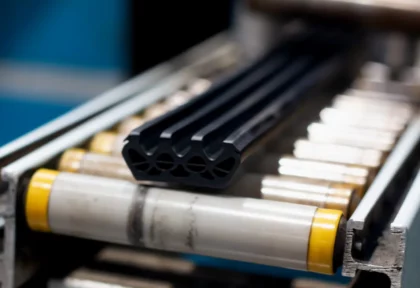
Extrusion Guide

Racing car bodywork for one of the world’s premier auto shows















